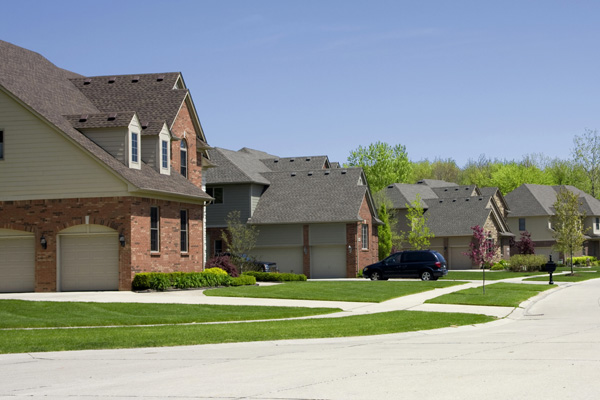3Qs: Will rising home prices cause another housing bubble?


Home prices have once again started to rise, making significant gains for the first time since the housing bubble burst in 2007. While that’s good news for sellers, it could be bad news for the nation’s economy. Joseph Giglio, an executive professor of general management in the D’Amore-McKim School of Business, warns that rising home prices could be a prescient sign of another housing bubble.
What caused the housing bubble that began in the early 1990s and burst in 2007? How might those same issues resurface as housing prices once again begin to climb?
Historically, the economy drove real estate and housing, so job creation and wage growth were the key drivers of home purchases. Buyers would save for a down payment, get approved for a mortgage, and then go shopping to buy a home. While interest rates were an important factor, it was the economy that mattered most. But the housing cycle from 2000 to 2007 was different. America saw the creation of a housing bubble, encouraged by low interest rate policies implemented by the Federal Reserve in the wake of the 2000 stock market crash and the recession that was caused when the dot-com bubble burst.
Government policy also contributed to the creation of the housing bubble, with both the Clinton and Bush administrations promoting an “ownership society.” By early 2004, the homeownership rate hit an all-time high of more than 69 percent, up from 64 percent in the mid-1990s. What is remarkable is that even after the collapse of the housing bubble, federal policymakers have again turned to the same policy tools that helped create the housing price bubble: easy money and cheap credit.
Did a spike in oil prices factor into the last housing bubble?
The 75 percent collapse in crude oil prices that began in mid-2008 makes it easy to forget the outright panic that spread across the country during earlier months while oil prices were galloping frighteningly toward an inconceivable price of $150 per barrel. This was especially worrisome for auto-dependent residents of states like California, Florida, and Arizona, where many homebuilders constructed an increasing proportion of their new houses in previously undeveloped “fringe areas” of metropolitan regions where they could leverage lower land costs. But these fringe areas tended to be much further from regional job centers than existing residential areas, meaning that while housing was cheaper, commuting costs increased.
During a period of stable gasoline prices, many homebuyers (especially first-timers) found this trade-off sufficiently attractive to choose less-expensive fringe area houses and absorb somewhat higher commuting costs. But the onset of soaring oil prices shattered this comfortable trade-off. As gasoline prices skyrocketed, the costs of auto commuting became an increasing burden.
This destabilized housing prices in several ways. For starters, homebuilders with large inventories of newly constructed house in fringe areas found it increasingly difficult to sell these houses for anything close to their normal profit margins. This diminished the ability of many homebuilders to repay their construction loans from local banks, so banks stopped lending, builders stopped construction, and construction workers were laid off. These factors combined caused housing prices in the affected regions to stop growing and even decline.
Also, homeowners (especially first-timers) in these regions found that the market value of their homes had begun to decline, leaving them with shrinking home equity and little or no ability to refinance their adjustable-rate mortgages. This caused the rates of home abandonments and foreclosures to escalate, dumping more houses on already saturated markets, which placed further downward pressure on home prices.
In what ways are low interest rates sparking a new wave of home buying, and how could that contribute to the bursting of a potential housing bubble?
Housing prices are up 8.1 percent over last year, and sales have been improving, too. The National Association of Realtors estimates that 4.65 million previously owned homes were sold in 2012, up 9.2 percent from 2011.
So is the housing recovery caused by rising demand from people who are doing better economically because of robust growth in jobs and incomes? Or are the private equity firms, hedge funds, and foreign investors betting on the housing market’s recovery by buying homes, renting them for short-term profit, and holding them for long-term price appreciation?
This certainly appears to be the case in places like Florida, Georgia, Arizona, Nevada, and California, where homes prices fell the most during the Great Recession. In the process, they are helping fuel the home price surge, bankrolled again by cheap credit made available by the Fed’s zero-interest-rate policy. They are shrinking inventory, crowding out local buyers, and making homes beyond the economic reach of first-time home buyers.
But ultimately, it’s important to remember that it’s hard to recognize a bubble when you are in it; you only see it after it bursts.





